Once again. When in 1582 AD the Pope Gregory XIII
introduced a new (our) calendar it was motivated by how
the precession had made the cardinal points of the Sun
come earlier (as compared to the stars) than anciently.
... The Julian calendar day Thursday,
4 October 1582 was followed by the first day of the
Gregorian calendar, Friday, 15 October 1582 (the cycle
of weekdays was not affected) ...
Instead of the Julian date 5
October 1582 there was an abrupt leap ahead with 10 days
to 15 October 1582 AD, leaving 10 'stolen' days out in
limbo - or even more if the Gregorian calendar was
adopted later.
The pair of hulls of the Royal Double Canoe could have
been
meant to illustrate this pair of calendars - the Julian
and the Gregorian - with the Julian one threatening to
arrive too early.
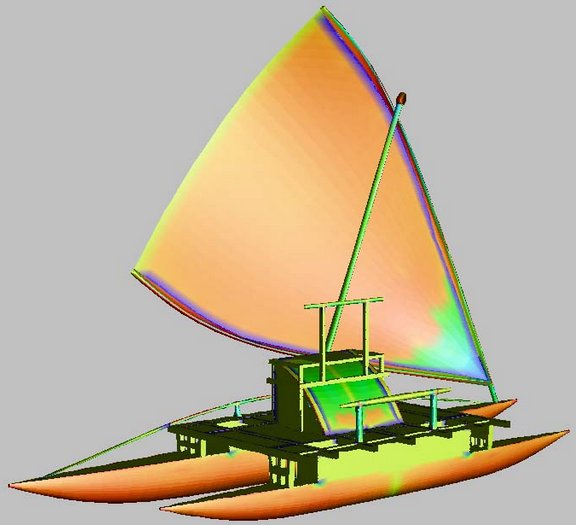
Thus the powerful mana of 10 persons would have
been needed in order to
correct this ugly phenomenon:
... The men on board [o runga]
the royal canoe looked out [he ui] from Varinga
Te Toremo (the northeastern cape of the Poike peninsula).
There they saw [he tikea] the canoe of the queen,
the canoe of Ava Rei Pua, as it reached [ka tuu]
Papa Te Kena (on the northern shore, east of Hanga
Oteo). Honga came and gazed in
the direction below (i.e., toward the west).
He called out [he rangi]
to the noteworthy ruler (? ariki motongi) Hotu,
'There is the canoe of the queen! It will be the first
one to land! [he rae ka tomo era]'
At this news King Hotu replied to
Honga, 'Recite (rutu) (powerful incantations) as
though the ten brothers of the chief (ariki maahu)
were one whole(?).' The ten
recited with all their might. [he rutu korua
atatahi te angahuru] This is what
they recited [penei i rutu ai]: 'Let all movement
(? konekone) cease!' [ka hakamau te konekone].They
recited and sailed on swiftly [he rutu he oho mai]:
Honga, Te Kena, Nuku Kehu, Nga Vavai, Oti, Tive
(corrected for Sive),
Ngehu, Hatu, Tuki, and Pu (corrected for Bu) ...
[E:79 → correct average day for the northern spring equinox]
And there was no coincidence in selecting day 288 (= 24
* 12) as the
'day of birth' of the Gregorian calendar. It was based
on the ancient structure, we can see down below, because °October 15
was where the Sun reached Thuban at the top of the sky
with the Full Moon at the Knot (Al Risha). In
Roman times (the time of Julius Caesar) this had
determined
the date for the (northern) autumn equinox.
|
AUG 14 |
15 |
16 (*148) |
17 (229) |
18 |
19 |
 |
 |
 |
 |
 |
 |
|
Ga6-6 |
Ga6-7 |
Ga6-8 (148) |
Ga6-9 |
Ga6-10 |
Ga6-11 |
|
CLOSE
TO THE
SUN: |
|
MUPHRID (Solitary Star) = η Bootis
(210.1), ζ Centauri (210.3) |
φ Centauri (211.0), υ¹ Centauri (211.1),
υ² Centauri (211.8), τ Virginis (211.9) |
AGENA (At the Knee) = β Centauri
(212.1),
θ
Apodis (212.5),
THUBAN
(Dragon) =
α
Draconis
(212.8) |
14h (213.1)
π
Hydrae,
χ
Centauri (213.0),
MENKENT (Shoulder of the Centaur) = θ
Centauri
(213.1) |
Neck-2 (Dragon)
ASELLUS TERTIUS (3rd Ass Colt) = κ
Bootis, κ Virginis, 14 Bootis
(214.8) |
Al Ghafr-13 (The Cover) /
Svāti-15 (Very Good) /
TAHUA-TAATA-METUA-TE-TUPU-MAVAE-6 (a
pillar to stand by)
15 Bootis
(215.2),
ARCTURUS
=
α
Bootis
(215.4),
ASELLUS SECUNDUS (2nd Ass Colt) = ι
Bootis
(215.5),
SYRMA (Train of the Virgin's Robe) =
ι
Virginis,
λ
Bootis (215.6),
η
Apodis (215.8)
*174.0 = *215.4 - *41.4 |
|
Oct 17 (290) |
18 |
19 |
20 |
21 (*214) |
22 |
|
... The star could be seen, both by day and
night, from the bottom of the central
passage of the Great Pyramid of Cheops (Knum
Khufu) at Ghizeh, in 30° of north
latitude, as also from the similar points in
five other like structures; and the same
fact is asserted by Sir John Herschel as to
the two pyramids at Abousseir ...
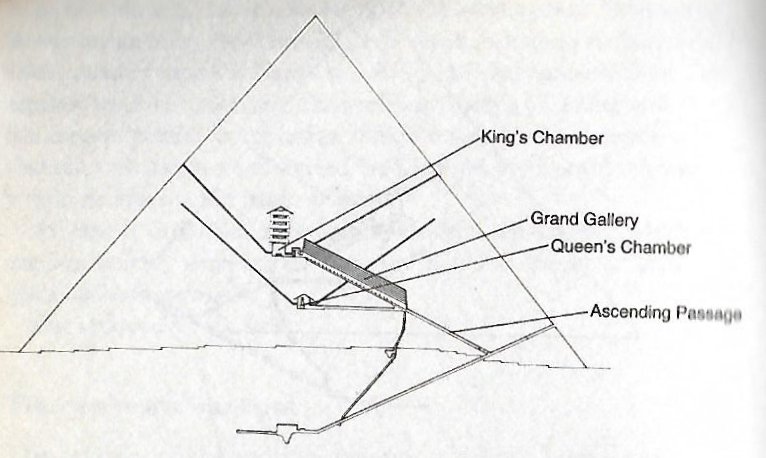
...
For some reason, too, it had taken their
fancy to place the Great Pyramid almost
exactly on the 30th parallel at latitude 29º
58' 51". This, a former astronomer royal of
Scotland once observed, was 'a sensible
defalcation from 30º', but not necessarily
in error: For if the original designer had
wished that men should see with their body,
rather than their mental eyes, the pole of
the sky from the foot of the Great Pyramid,
at an altitude before them of 30º, he would
have had to take account of the refraction
of the atmosphere, and that would have
necessitated the building standing not at
30º but at 29º 58' 22'
...
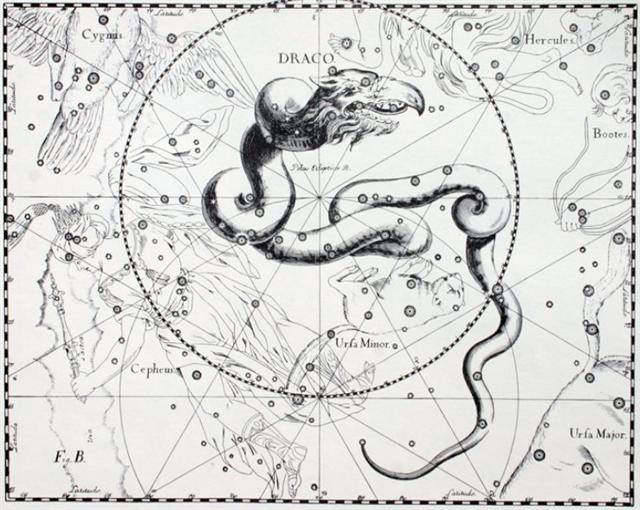
|
|
°Oct 13 |
14 |
15 (*208) |
16 |
17 (290) |
18 |
|
'Sept 20 |
21 |
EQUINOX |
23 (*186) |
24 |
25 (268) |
|
"Sept 6 |
7 |
8 |
9 (*172) |
10 |
11 (254) |
|
DAY 210 |
211 |
212 |
213 (= 229 - 16) |
214 |
215 |
|
CLOSE
TO THE FULL MOON: |
|
FEBR 12 |
13 |
2-14 (45) |
15 |
16 (*332) |
17 (413) |
|
Al Sharatain-1 /
Ashvini-1 /
Bond-16 (Dog) /
Mahrū-sha-rishu-ku-1 (Front of the Head
of Ku)
SEGIN =
ε
Cassiopeia, MESARTHIM =
γ
Arietis,
ψ
Phoenicis (27.2),
SHERATAN
(Pair of Signs) =
β
Arietis,
φ
Phoenicis (27.4)
*351.0 = *27.4 - *41.4 |
ι Arietis (28.0), λ Arietis (28.2), υ
Ceti (28.8) |
ALRISHA (The Knot) = α Piscium, χ Phoenicis (29.2), ε Trianguli (29.4),
ALAMAK (Caracal) = γ Andromedae
(29.7)
*353.0 = *29.4 - *41.4 |
Arku-sha-rishu-ku-2 (Back of the Head of
Ku)
2h (30.4)
κ
Arietis (30.3),
HAMAL
(Sheep) =
α
Arietis
(30.5)
ALKES (α
Crateris) |
DELTOTUM = β Trianguli
(31.2), ι Trianguli (31.7), η Arietis
(31.9) |
ξ¹ Ceti
(32.1) |
 |
|
April 17
(107) |
18
(365 + 108) |
19 |
20 (*395) |
21 (111) |
22 |
|
°April 13 |
4-14 |
15 |
16 (471 = 1½ * 314) |
17 (107) |
18 |
|
'March 21 |
22 |
23 |
24 (*368) |
EQUINOX |
26 (85) |
|
"March
7 |
8 |
9 |
10 (*354) |
11 |
12 |
|
DAY 27 |
28 |
29 = 212 - 183 |
30 |
31 |
32 |
The calendar dates relied on significant fixed stars
and the positions of these (as measured
according to the
Sun calendar) changed over time due to the
precession. Therefore it was necessary to add
the number of the year to a date.
In Manuscript E the date Hora Nui 2 (245)
was evidently connected to the pair of stars at the hind
quarter of Leo and therefore a Sign had to be
given - viz. that Nonoma (as Leo) was
out in the night urinating.
Because no year was given in Manuscript E it
would otherwise be uncertain as to in what
time-frame the Royal Double Canoe had left
Hiva. And we cannot take for granted that the
dates in the manuscript always were referring to
the same specific time-space framework.
... Space and time are a
single, related concept in Runasimi [the
language of the Inca people], represented by one
word, pacha, which can also mean 'world'
and 'universe'. The image of time familiar to
Waman Puma was static and spatial:
one could travel in time as one travels over
earth - the structure, the geography, remaining
unchanged. To him it does not matter that he
shows Inka Wayna Qhapaq, who died
in 1525, talking to Spaniard, who did not arrive
until 1532. Wayna Qhapaq was the last
Inca to rule an undivided empire: he is
therefore the archetype, and it must be he who
asks the Spaniards. 'Do you eat gold?'
Instead of explicitly presenting the time-frames
of the mentioned dates, the intention was surely to make the
reader think for himself. Then - once he had understood
- it would remain rooted forever in his mind
- instead of blowing away if simply presented
explicitly on
a tray.
|
JUNE 28 |
29 (180) |
SIRIUS |
JULY 1 (*102) |
 |
 |
 |
 |
|
Ga4-16 |
Ga4-17 (100) |
Ga4-18 |
Ga4-19 |
|
ν Hydrae (163.1) |
no star listed (164)
ALTAIR (α
Aquilae) |
Wings-27 (Snake)
η
Octans (165.4),
ALKES
(Shallow Basin) =
α
Crateris
(165.6)
*124.0 = *165.4 - *41.4 |
ANA-TIPU-4 (Upper-side-pillar -
where the guards stood)
MERAK
(Loin, not Lion) =
β
Ursae Majoris
(166.2),
DUBHE
(Bear) =
α
Ursae Majoris
(166.7) |
 |
|
Aug 31 |
Sept 1 |
2 (*165) |
3 (246) |
|
°Aug 27 |
28 |
29 (*161 → °June 10) |
30 (242) |
|
'Aug 4 (216) |
5 (*137) |
6 |
7 |
|
"July 21 |
22 / 7 → π |
Te Anakena 23 (204) |
24 (*125) |
|
... They
remained in Hanga Hoonu
for five days. On the
twenty-third day of the month of
July ('Anakena'), they reached
Rangi Meamea ...
[E:25-26] |
|
JULY 2 |
3 (184) |
4 (*105) |
77 |
 |
 |
 |
|
Ga4-20 |
Ga4-21 (104) |
Ga4-22→ 84 |
|
11h (167.4)
χ Leonis, χ¹ Hydrae (167.1), χ²
Hydrae (167.3)
*167.4 - *41.4 = *126.0 |
AL SHARAS (The Ribs)
=
β
Crateris
(168.6) |
Al Zubrah-9 (Mane) /
Purva Phalguni-11 (First Reddish One
-
Fig Tree)
ZOSMA
(Girdle, not Belt) =
δ
Leonis
(169.2),
COXA
(Hips) =
θ
Leonis
(169.4)
*169.4 - *41.4 = *128.0
|
 |
|
Sept 4 |
5 (248 = 104 + 144) |
6 |
|
°Aug 31 |
°Sept 1 (*164 → Ga7-17) |
Hora Nui 2 (245) |
|
'Aug 8 (*140) |
9 |
10 (222) |
|
"July 25
(*126) |
26 |
27 (208) |
 |
|
SEPT 20 (*183) |
21 |
EQUINOX |
23 (266) |
24 |
25 |
 |
 |
 |
 |
 |
 |
|
Ga7-14 |
Ga7-15 |
Ga7-16 |
Ga7-17 (186) |
Ga7-18 (103 + 84) |
Ga7-19 |
|
Heart-5 (Fox)
σ
Scorpii
(247.0),
HEJIAN =
γ
Herculis
(247.2),
ψ
Ophiuchi (247.7) |
ρ
Ophiuchi (248.1),
KAJAM
(Club) =
ω
Herculis
(248.3),
χ
Ophiuchi (248.5),
SHE LOW (Market Tower) =
υ
Ophiuchi,
Tr.
Austr. (248.7), ζ Tr. Austr.
(248.8) |
Al Kalb-16 (The Heart) /
Jyeshtha-18 (Eldest) /
ANA-MUA-1 (Entrance pillar)
ANTARES
= α Scorpii
(249.1),
MARFIK (Elbow) = λ Ophiuchi,
φ Ophiuchi (249.5), ω Ophiuchi
(249.8) |
γ Apodis (250.1), σ Herculis
(250.3), θ Tr. Austr. (250.6), τ
Scorpii (250.7) |
HAN = ζ Ophiuchi
(251.0) |
ζ
Herculis,
η
Tr. Austr.
(252.1), η Herculis, β Apodis
(252.5) |
|
JULY 2 (183) |
83 |
SEPT 24 (267) |
 |
 |
|
11h (167.4)
χ Leonis, χ¹ Hydrae
(167.1), χ² Hydrae
(167.3)
*167.4 - *41.4 =
*126.0 |
HAN = ζ Ophiuchi
(251.0) |
|
|
Nov 23 (327) |
24 |
25 |
26 (*250) |
27 |
28 |
|
°Nov 19 |
20 (324) |
21 |
22 (*246) |
23 |
24 |
|
'Oct 27 (300) |
28 |
29 (*222) |
30 |
31 |
'Nov 1 |
|
"Oct 13 |
14 |
Tagaroa Uri 15 |
16 |
17 (290) |
18 |
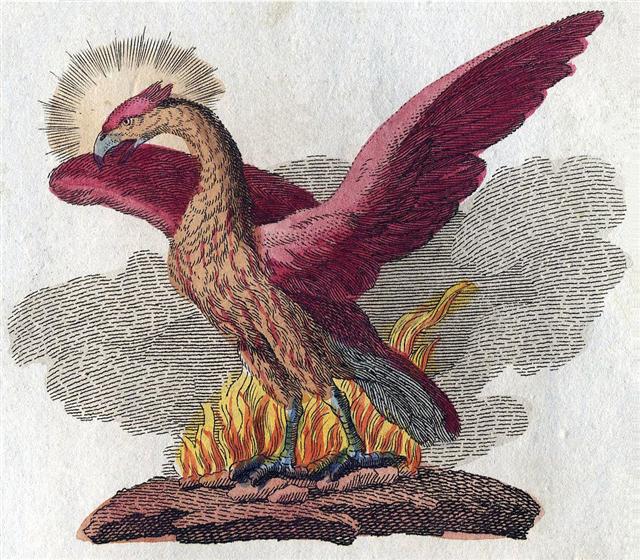 |
The pattern becomes more clear if we
change counting stars and dates from the
Gregorian spring equinox (day 80) to the
Julian spring equinox (day 84):
|
SIRIUS
Alkes
*165 =
☼161
Rangi
Meamea |
JULY 4 (☼101) |
AUG 16
(☼144) |
SEPT 22
(☼181) |
|
Zosma
/ Coxa
*169 =
☼165 |
Thuban
*212 =
☼208 |
Antares
*249 =
☼245 |
|
84 |
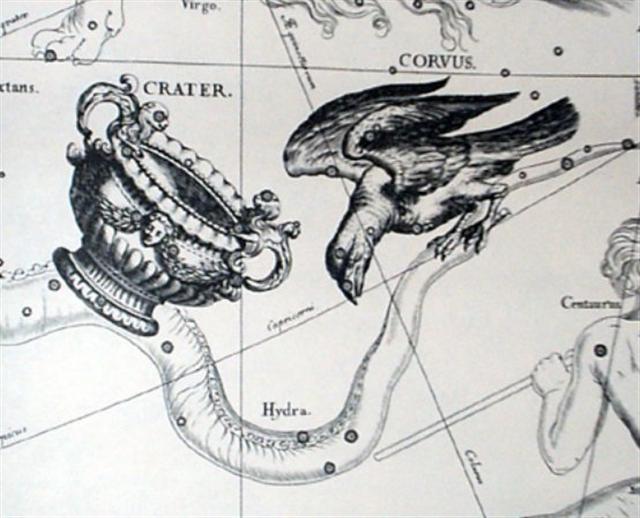
|




















